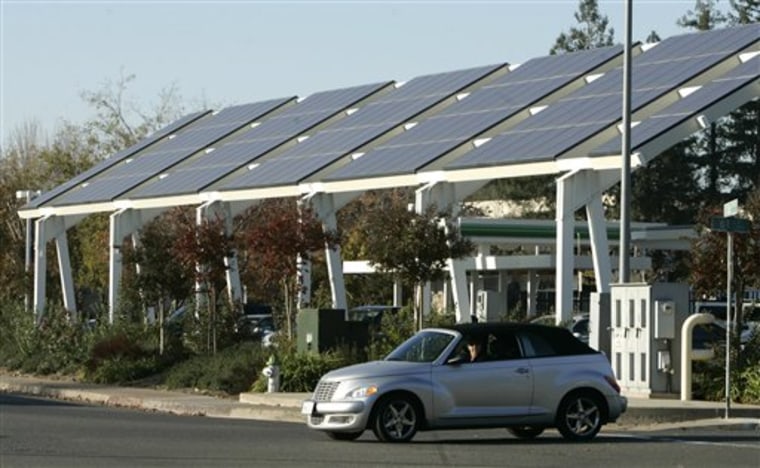California air regulators on Thursday approved a climate plan that would require the state's utilities, refineries and large factories to transform their operations to cut greenhouse gas emissions.
The California Air Resources Board adopted what will be the nation's most sweeping global warming plan, outlining for the first time how individuals and businesses will have to meet a landmark 2006 law that made the state a leader on curbing warming emissions.
California's worst polluters will be held accountable for the heat-trapping emissions they produce — transforming how people travel, utilities generate power and businesses use electricity.
At the heart of the plan is the future creation of a carbon-credit market designed to give the state's major polluters cheaper ways to cut emissions.
The plan sets strategies for how the country's most populous state plans to cut emissions at a time many governments around the world are struggling with a financial crisis that threatens to undermine efforts to fight climate change.
California's plan comes at a time when governments around the world are struggling with a financial crisis that threatens to undermine efforts to fight climate change. California itself is facing a forecast budget gap of $41.8 billion through June 2010.
Republican Gov. Arnold Schwarzenegger, who has said the state's climate law will stimulate the economy, said Thursday that California was providing a roadmap for the rest of the country.
"Today is the day we help unleash the full force of California's innovation and technology for a healthier planet, a stronger and more robust economy and a safer and more secure energy future," Schwarzenegger said in a statement released after the board's vote.
His sentiments echo those of President-elect Barack Obama, who also has promoted investments in energy efficiency and green technology to help spur the country out of recession. Last month, Obama said he hoped Congress would adopt California's targets for the entire country, essentially reversing eight years of U.S. policy against mandated emission cuts.
California's 2006 law, called the Global Warming Solutions Act, mandates the state cut emissions to 1990 levels by 2020.
31 new rules
The strategy chosen by air regulators relies on 31 new rules affecting all facets of life, from what fuels Californians put in their vehicles to what kind of air conditioners businesses put in their buildings.
The average Californian, for example, can expect to pay to have his or her car tires inflated during oil changes and to pay higher power bills as utilities try to increase their use of renewable energy.
He or she could also see more fuel-efficient cars at dealerships, better public transportation, new housing near schools and businesses, and utility rebates to equip homes to be more energy efficient.
New fees and reporting requirements will accompany the emission rules.
"Overall I feel that we have a very solid basis for what we're working to accomplish," air resources board chairwoman Mary Nichols said as the board opened discussion on the plan Thursday.
Finding ways to implement California's target has not been without controversy.
Chamber of Commerce opposes
Republicans, some small businesses and major industries that will be forced to change their operations say jobs could be lost, companies might leave the state and energy prices will skyrocket.
"The deepening recession has affected businesses throughout the state," Amisha Patel, a policy advocate at the California Chamber of Commerce told the board Thursday. "The reality of climate regulation is there will be costs."
California's nonpartisan legislative analyst and independent scientists have criticized some of the air board's research, saying the costs to the state could be greater than projected.
An air board analysis published in September projected California's economy would grow faster if the state acts to cut emissions. It estimated 100,000 more jobs would be created and the average California household would save $400 a year by driving more fuel-efficient vehicles and living in more energy-efficient homes.
Nichols said she was optimistic the country would be out of the recession by the time California's industries, commercial businesses and individuals must begin complying with emission regulations in 2012.
Costs, savings estimated
Once all the measures are in force, the air board projects the cost to the state at $25 billion in 2020, but said that will be more than offset by the savings — which it estimates at $40 billion that year. Supporters of the law also hope it will make California a leader in green technology, attracting investments and jobs.
Most of the reductions in California's emissions will come from more detailed regulations that will be written over the next few years, including rules governing a cap-and-trade program that launches in 2012 to help the largest polluters achieve emission cuts.
But allowing businesses to buy their way out of the problem is another contentious part of the plan. Representatives of California's poor communities say the polluting power plants, refineries and factories in their neighborhoods could write a check rather than cut emissions.
